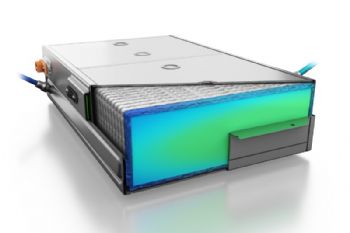
Using nature as a model,
Mahle recently achieved a technological leap forward with its new battery cooling plate when the group’s engineers developed a bionic structure-that is ‘modelled on nature for the cooling channels’ and causes the coolant to ‘flow differently’, significantly improving the thermodynamic performance and structural-mechanical properties of the cooling plate. As a result, Mahle has been able to increase cooling performance by 10% and reduce pressure loss by 20%.
This performance means the battery can be reliably kept within the necessary temperature window and be charged more quickly, while its service life is enhanced. Furthermore, Mahle has reduced the amount of material used for the plate by up to 15%.
Uli Christian Blessing, Mahle’s head of global development (thermal management), said: “With our new battery cooling plate, we are breaking away from technical geometries and instead using natural structures, such as the coral shape, with outstanding effect for our cooling technology — along with advantages in structural stability.
“Lithium-ion batteries are very temperature-sensitive. The cell temperature should not exceed 40°C over longer periods, even under extreme conditions such as fast charging. At the same time, the temperature distribution across all cells must be as uniform as possible. The batteries are therefore usually cooled via flow-through plates.
“In this latest development, the flow rate of the coolant is controlled according to demand, and especially in the case of small temperature differences between battery cells and coolant, heat transfer is improved by faster flow rates. Our ‘bionic battery cooling plate’ works so efficiently that the temperature range can be reduced by 50% and peak temperatures can be significantly lowered. This capability makes a major contribution to the service life and performance of these costly batteries.”